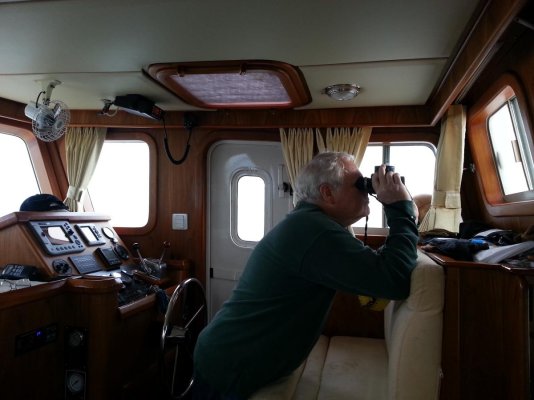A 25' tug can be pushing a 60' barge and not be required to have AIS.
Correct... and often a totally unsuitable platform to do the job due to hp.
When I questioned a senior USCG representative (not a uniformed member but a civilian)...I asked why if I could legally drive a 100 ton tugboat with 2000hp, why was I required to use a 2.5 ton, 350hp, 26 foot Shamrock to move around 120-150 foot barges, some weighing over 750,000 pounds?
The answer was I was allowed to ONLY drive tugs under 25 feet (100 ton master) when actually towing for hire and that based on my experience of which none of the crazy moving the mountain stuff with a donkey cart counted because I wasn't under the supervision of a Master of Tow captain for any of those 15 years to upgrade. But I could feel free to drive around any tug up to 100 gross ton and do whatever I wanted except tow something...which tug/tow boats generally are designed to do.
And you guys are worried small tug/towboats aren't broadcasting on AIS? They should be broadcasting "barely under control" (similar to "not under command") signals much of the time.
Yet companies with their own tugs and barges where the tugs are under 26 feet....don't even need a captains license. That's not a red flag in some cases?
No, I don't see the government making AIS mandatory for awhile, because if they do, they have to mandate VHFs for all vessels otherwise calling people without radios is a fun thing to do. As I said, if anyone here (and in the US) thinks AIS is a bigger safety item than an anchor which still isn't mandatory.... I just can't figure out most TFers.
My understanding is AIS is primarily a collision avoidance tool....so is RADAR... and RADAR sees obstructions including most ATON above the water and well as most boats. Trouble with RADAR is it takes skill over AIS to be adept at using it. Sure they both can do things the other can't but AIS only sees what is transmitting which in coastal US waters ain't a lot...and most that are show up on radar or are in predictable waters are ones you can avoid. If receiving only, call the target and advise them of YOUR position and intentions. now they know where you are.




